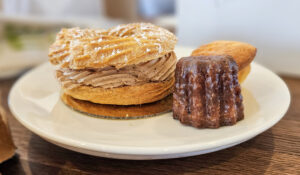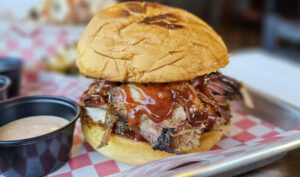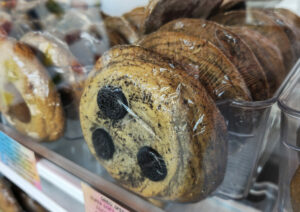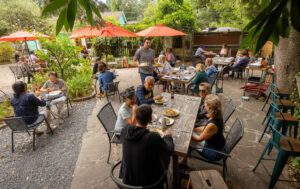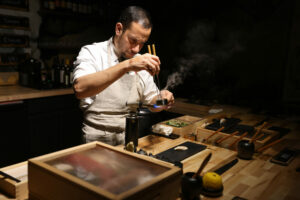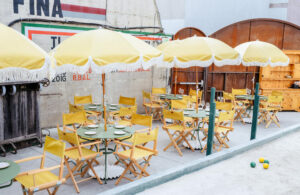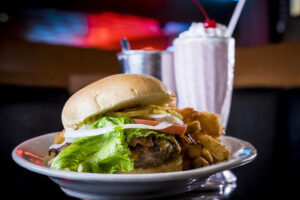
Don’t miss the third annual Freestone Fermentation Festival in Freestone on Saturday, May 21, 2011. The event brings together fermenters of all stripes with demos, sampling and live entertainment.
Fermentation celebs Sandor Katz and brewmaster Dr. Charles Bamforth and Osmosis’ Michael Stusser will participate in a Symposium and Fermentation Feast hosted by Chef John Ash on Friday.
More details, ticket info and directions online.
Balancing the razor thin line between delicious and rotten are a whole category of foods that fizz, stink and ooze their way to ripe and robust splendor.
Defined politely as “fermented”, this process of controlled spoilage isn’t necessarily pretty, but can result in complex, rich complicated flavors (think ripe Camembert or fiery kimchi) and some pretty heady health claims. Not to mention the current darlings of nouveau homesteaders and retro-granny hipsters who are canning and pickling anything not tied down.
What’s all the hoopla? Touted by some as the next superfood, health promises of fermented food range from better digestion to improved metabolism and cancer-fighting properties.
Staples of our ancestral pantries, this funky process was one of the only pre-refrigeration ways to preserve food, resulting in cheese, sour cream, cured meats, beer, wine, bread, vinegar, fish sauce, pickled foods, miso, kimbucha and soy sauce among others.
Serious props to Korean guy nominated to take the first bite of the cabbage someone had buried underground and let ripen for a few months.
“It can be a little scary to people,” says Santa Rosa registered dietician and teacher Jill Nussinow (aka The Veggie Queen). Many of our natural defenses tell us to steer clear of foods that look, taste and smell, well, putrid. For good reason — they make us sick.
But properly done, fermentation slows or halts food from rotting, holding it at a place where good bacteria overcome the bad stuff and make for healthy fare.
Nutritionists say raw fermented foods have the most beneficial health qualties, but a variety of foods (even some you might not suspect) are actually fermented at some point. Milk products in the US are pasteurized before the live cultures are added.
Live Fermented Foods
- Kefir
- Kimchi
- Kombucha
- Sauerkraut
- Pickles
- Tempeh
- Sour cream, yogurt, buttermilk
- Unpasteurized aged Cheese
- Unpasteurized beer
Other foods that ferment with the help of bacteria
- Charcuterie
- Wine
- Beer
- Vanilla
- Ginger Beer
- Fish Sauce
- Soy Sauce
- Vinegar
- Bread
- Chocolate
- Tea
- Coffee
- Miso
“Here’s why fermented foods are important right now: A lot of people take antibiotics…they’re even in our food and water supply, and that kills the good flora in our guts. Along with all the processed white foods we eat, we just don’t get a lot of good bacterial growth in our bodies,” Nussinow said.
Why do you want that? Fermented foods are natural probiotics, meaning they help grow that natural bacteria inside us. The human body works better when certain types of “friendly” bacteria flourish in our digestive system, helping to break down foods and flush out the system. In others words, it’s what helps move you.
And when it comes to health benefits (and note, not everyone is on the fermented bandwagon…some folks think rotten is just plain rotten) the raw stuff packs the biggest probiotic body punch. Cooking, heating and pasteurization can kill the good bacteria that nutritionists are so fond of.
Wanna take the plunge? Go local and dive into Sonoma County’s own fermentable feast.
Kombucha: A fermented tea long-revered for its healing properties in Asia and Russia, Kombucha is the it-drink of 2010. Lightly carbonated, it has a tart, slightly yeasty flavor that takes a little getting used to, along with the “floaties” of culture that need to be shaken up before drinking. The caffeine and corn syrup-free body buzz they live you with makes any trepidation short-lived.
– Vibranz Kombucha: Juice know-how from the former Sonoma Sparkler crew makes these fizzy drinks an easy-approach for newcomers. Made in Healdsburg with organic flavors like raspberry, ginger-lemon and mango. Vibranzbev.com, available at Whole Foods, Pacific Market, Molsberry’s.
– Lonjevitea: A double punch of yerba-mate tea and kombucha is the formula for 20-somethings Mollie Sitkin and Michaela Biaggi’s Petaluma-based probiotic tea business. Local juices flavor their Gravenstein apple, chamomile and ginger kombucha. Available at Whole Foods. lonjeviteakombucha.com.
Kimchi: Raging through food circles as the condiment of the moment, this Korean national food is usually a combination of cabbage, chilies, sugar, vinegar, garlic and radishes fermented for days or weeks. Or more. Good for newbies is Wild Rose Ranch’s mild and tangy version. ($7 at the Santa Rosa Saturday farmer’s market)
Homemade Sauerkraut & Pickles: Dave Ehreth is the pickle king of Sonoma County, creating converts daily with addictively delish Alexander Valley Gourmet pickles and sauerkraut. The unpasteurized Manhattan-style pickles have a blend of nine spices, fresh garlic and sea salt. And hot dogs scream for his tart raw sauerkraut. Available at Oliver’s, Whole Foods markets, Jimtown Store.
Winning top honors at the 2011 Good Food Awards was Sebastopol’s Ceres Community Project’s Arame & Ginger Sauerkraut Salad. More than just a tasty side dish, fermented cabbage is said to have restorative and health benefits for the digestive system — something especially important for Ceres’ clientele. Using ingredients from organic local producers like Tierra Vegetables and First Light Farms, Ceres brings together teen cooks and local volunteers to prepare healthy, organic meals for individuals and families struggling with cancer.
 Natto: This traditional Japanese health food is for the adventurous eater. These fermented soybeans have a stringiness that pulls melted taffy and piping hot mozzarella to shame, leaving little cobwebs trailing from every bite. And the ripe smell is well, unforgettable (even more so if you get the stuff on your hands). But the health-qualities of this raw fermented food include antioxidants, protein, amino acids and is said to help alleviate hot flashes during menopause. Magumi Natto, made in Sebastopol, has a milder flavor than frozen, imported versions. Available at the Santa Rosa Community Market, Andy’s Produce.
Natto: This traditional Japanese health food is for the adventurous eater. These fermented soybeans have a stringiness that pulls melted taffy and piping hot mozzarella to shame, leaving little cobwebs trailing from every bite. And the ripe smell is well, unforgettable (even more so if you get the stuff on your hands). But the health-qualities of this raw fermented food include antioxidants, protein, amino acids and is said to help alleviate hot flashes during menopause. Magumi Natto, made in Sebastopol, has a milder flavor than frozen, imported versions. Available at the Santa Rosa Community Market, Andy’s Produce.
Kefir: A cousin to yogurt, kefir has additional strains of good bacteria that really go to work on the old digestive tract. With smaller (easier to eat) curds than regular yogurt, this tart, smoothie-like drink comes in both goat and cow-style, here in Sonoma County. Redwood Hill Farm’s goat milk kefir comes in mango orange pinapple, plain and blueberry pomagranate. Available at most local grocers. Clover Organic Farms is also in on the kefir action with pomagrante strawberry acai, plain, mango orange pineapple and blueberry. Available at G&G Market.


